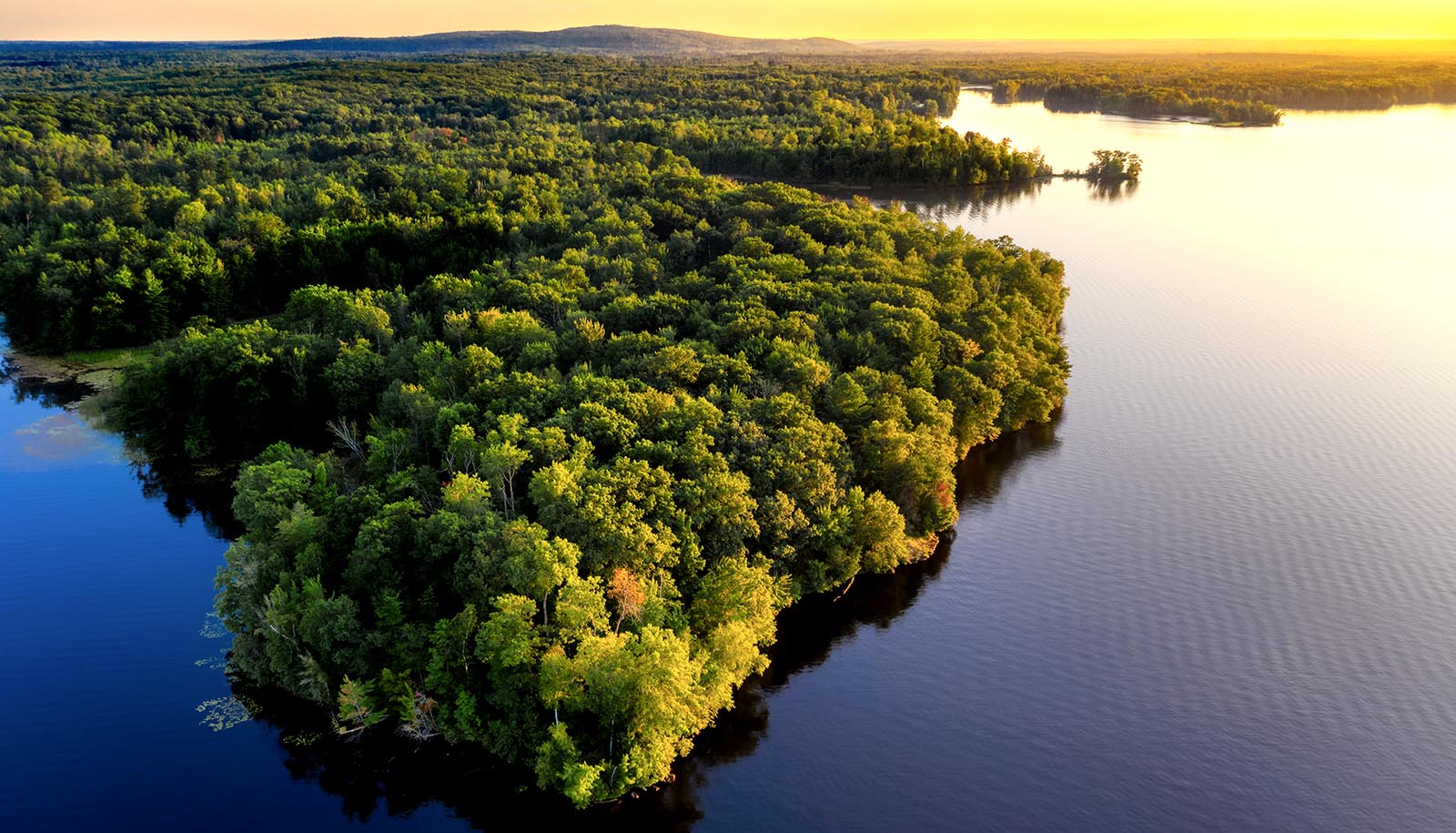New research links the amount of carbon dioxide taken in by land ecosystems, such as forests, to the availability of water, which is in short supply during droughts.
Our climate is rapidly warming with rising temperatures affecting the physical environments that support entire ecosystems. Humans and animal species both face daunting challenges for survival because of climate change.
During a PhD trip to an eddy covariance tower in a Canadian forest, gazing at the colorful autumn canopies, climate change ecologist and National University of Singapore assistant professor Luo Xiangzhong realized the tower was monitoring something invisible: the amount of water and carbon dioxide the forest was using and absorbing.
The knowledge that the forest’s carbon dioxide uptake had risen for 10 years for reasons yet unknown crystalized his interest in the links between the visible and invisible, and how climate may affect ecosystems in ways we cannot directly see.
The recent study he led illustrates this relationship clearly. The findings highlight the significant impact droughts have on forests’ ability to take in carbon dioxide (or CO2)—the main greenhouse gas driving climate change—from the atmosphere.
Here, Luo shares more about importance of climate change ecology, its sister issues of carbon cycle and global photosynthesis, as well as his research:
What is climate change ecology?
Climate change ecology studies the interactions between climate change and natural ecosystems. This is a two-way process. On one hand, climate change influences ecosystems, leading to questions such as whether rising temperatures and reduced rainfall can make rainforests collapse. On the other hand, ecosystems can impact the climate through modulating carbon and water cycles on Earth. For example, ecosystems can mitigate global warming by taking CO2 out of the atmosphere through photosynthesis. Numerous environmental interactions and feedbacks cascade into a rather complex relationship between terrestrial ecosystems and climate change.
When we talk about ecosystems, we often think about trees and leaves. However, the advances in earth observation techniques in the past 20 years, such as eddy covariance, leaf gas exchange, and earth system modeling, have helped us see way beyond that. It also presents a great opportunity for us to push the boundaries of knowledge and better understand ecosystem dynamics.
Could you share more details of your recent study on the link between droughts and forests’ ability to absorb carbon dioxide?
Ecosystems take up different amounts of CO2 from the atmosphere yearly and this leads to variations in the atmospheric CO2 concentration (e.g., when land ecosystems take up more CO2, the CO2 concentration level in the atmosphere grows slower). Scientists have been discussing the reason for the variations in ecosystem CO2 uptake and atmospheric CO2 concentration level, and have provided rather contrasting explanations—some suggest temperature anomalies are the main reason, some suggest soil moisture, others point to historical land-use changes.
In this study, we looked into the magnitude change of the variation over the past 60 years and found a dominant role tropical extreme droughts played in modulating the atmospheric CO2 variation. This new discovery advances our understanding of the global carbon cycle, and highlights how tropical droughts, previously neglected and poorly considered in climate and carbon models, have in fact modulated the long-term variation in atmospheric CO2. As extreme droughts happen, ecosystems experience downregulation of photosynthesis, as well as tree mortality, fire, regeneration, and deadwood decomposition. These processes would make the ecosystem CO2 uptake more variable in the long term. In particular, we found that droughts in tropical Asia ecosystems have outsized impacts on the long-term variation of the global carbon cycle, which will motivate our future studies to examine drought impacts on tropical Asia ecosystems, including those in Singapore.
You have a particular interest in the dynamics of the terrestrial carbon cycle and global photosynthesis, topics which seem to be attracting growing global interest. Could you share a bit more about them and how they play an important role in mitigating climate change?
Climate change is induced by human emissions of heat-trapping greenhouse gases such as carbon dioxide. Since 1958, the global atmospheric CO2 level has increased by roughly 30% and global temperatures, by one degree Celsius [1.8 degrees Fahrenheit]. A key function of ecosystems is carbon sequestration. Through photosynthesis, ecosystems take up CO2 in the air and lock them into the biomass, therefore providing a nature-based solution to offset human emissions of CO2.
However, ecosystems not only take up CO2 through photosynthesis, but also release it through respiration and disturbances (e.g., fires and land use changes). As such, we need to have a good understanding of all individual carbon fluxes in the terrestrial carbon cycle to correctly quantify the carbon sequestration ability of the terrestrial ecosystem.
Currently, the terrestrial ecosystems can offset roughly 25% of human CO2 emissions every year, forming a so-called land carbon sink. The overarching goal of my research is to understand how this land carbon sink will change with climate change, and what is the best practice to maintain and enhance this carbon sink for climate change mitigation. My team’s and my current work is mostly focused on photosynthesis, as it is the start point of the terrestrial carbon cycle and determines other carbon fluxes, and as we still face substantial uncertainties in estimating photosynthesis for large regions.
What research projects are you currently working on?
My team and I are currently working on two projects aimed at advancing our understanding of the terrestrial carbon cycle in tropical Asia.
In one, we examine the structural and physiological traits of trees in Southeast Asia. These traits such as leaf nutrient content, chlorophyll, and leaf amount are the functioning blocks of ecosystems. With a good understanding of these traits, we would be able to quantify the carbon sequestration ability of tropical Asia ecosystems.
In the second project, we are investigating the joint impacts of climate change and land use on the carbon cycle in Southeast Asia. The main rationale is that Southeast Asia is a global hotspot of deforestation and it loses tons of carbon every year. We hope to uncover how much carbon could have been saved if we conserve these forests in a changing climate, to guide regional carbon restoration efforts.
In addition, we hope to develop a state-of-the-art carbon model specifically for tropical Asia for timely and accurate prediction of the regional carbon cycle. We are also looking to explore the long-term impacts of climate change on ecosystem functions and understand how much ecosystems have adjusted to climate change. We aim to establish advanced infrastructures, such as eddy covariance towers and solar-induced fluorescence sensors, in Singapore to monitor the land-atmosphere CO2 exchange of local ecosystems, and use the measurements to develop our ecological theories and support our studies on the terrestrial carbon cycle in tropical Asia.
Source: NUS



